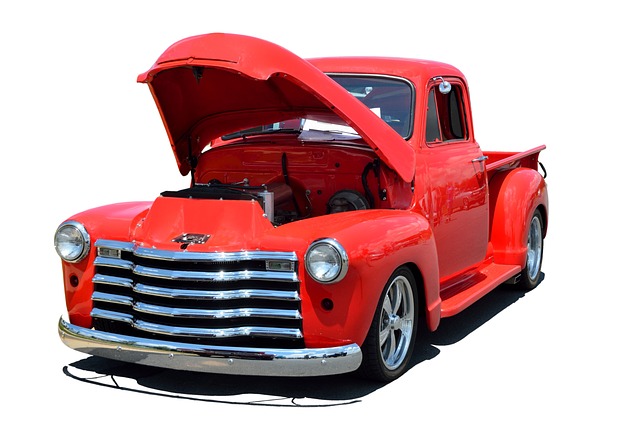When selecting a truck battery, it's crucial to consider not only the cold cranking amps (CCA) rating for reliable starts in all temperatures but also the ampere-hour (Ah) capacity for sufficient energy storage to handle the vehicle's electrical demands and frequent use. A high CCA rating ensures your truck can start in freezing conditions, while a higher Ah rating is essential for long hours of operation, especially with heavy-duty accessories or in environments with start-stop technology. For trucks used in construction or delivery, where the battery must endure repeated discharge and recharge cycles, opting for a battery with an appropriate Ah rating can greatly enhance operational life, reduce maintenance costs, and support future upgrades to more advanced powertrains. In summary, choosing the right truck battery—one that balances both CCA and Ah ratings—is key to ensuring your heavy-duty vehicle operates efficiently and reliably across diverse applications and environments.
In the realm of heavy-duty transportation, the selection of optimal battery size is a pivotal decision that significantly influences performance, efficiency, and total cost of ownership. This article delves into the critical aspects of choosing the right battery for commercial and industrial vehicles, from understanding their energy demands to integrating alternative energy sources. We explore factors such as power requirements, capacity considerations, and the role of advanced AGM and LFP batteries in heavy-duty applications. Truck battery size is a complex issue that involves balancing curb weight with energy storage, ensuring reliable starts through Cold Cranking Amps (CCA), and managing ampere hours for the longevity of the vehicle’s lifecycle. We also consider maintenance-free vs. maintained batteries, duty cycle design, and the importance of future-proofing to accommodate evolving needs. Additionally, we examine the economic implications, safety standards, and real-world case studies. With a focus on innovation, we look at the latest trends in battery technology for heavy-duty vehicles and provide guidance on selecting the right truck battery type for your fleet’s unique applications.
- Understanding the Energy Demands of Heavy-Duty Vehicles
- Factors Influencing Truck Battery Size Selection
- Assessing Power Requirements for Commercial and Industrial Vehicles
- The Role of Advanced AGM and LFP Batteries in Heavy-Duty Applications
- Capacity Considerations: Ah Ratings and Their Impact on Performance
- Curb Weight and Energy Storage: Balancing Loads with Battery Size
- Cold Cranking Amps (CCA): Ensuring Reliable Starts in All Conditions
- The Importance of Ampere Hours for Truck Battery Lifecycle Management
Understanding the Energy Demands of Heavy-Duty Vehicles

When selecting a truck battery for heavy-duty vehicles, it’s crucial to account for the energy demands these vehicles face. Heavy-duty trucks are equipped with a myriad of electrical systems and components that operate simultaneously, drawing significant power. These can include everything from the engine management systems to climate control, telematics, and advanced safety features. The battery must be capable of delivering high currents for starting the engine and supplying sustained power for auxiliary systems during operation.
The energy requirements for heavy-duty trucks are substantial, often necessitating batteries with larger capacities compared to those in passenger cars. Factors such as climate conditions, altitude, and the age and condition of the truck’s electrical system further influence battery performance needs. For instance, operating in extreme temperatures can strain the battery, requiring a robust design that ensures optimal function across various environmental ranges. Additionally, the increasing electrification of heavy-duty trucks introduces high voltage systems, which necessitates even more careful consideration when selecting truck batteries to ensure compatibility and safety. In summary, understanding the energy demands of heavy-duty vehicles is a complex task that requires an in-depth analysis of vehicle usage patterns, environmental factors, and technological advancements to choose the optimal battery size for these robust machines.
Factors Influencing Truck Battery Size Selection

When selecting the optimal battery size for heavy-duty vehicles, it is crucial to consider several factors that influence performance and longevity on the road. The type of truck and its intended use are primary determinants; commercial trucks, delivery vans, and construction vehicles have different energy demands compared to personal use pickup trucks. The battery’s capacity must be sufficient to start the engine in all weather conditions, especially in colder climates where the chemical performance of lead-acid or AGM (Absorbent Glass Mat) batteries can be compromised.
Additionally, the truck’s electrical system load is a significant factor. Modern heavy-duty vehicles often come equipped with advanced electronics, telematics systems, and onboard diagnostic tools that all draw power from the battery. High-drain accessories like refrigeration units or sophisticated audio systems can further deplete the battery. To accommodate these demands without frequent recharging, a larger battery may be necessary. Furthermore, the anticipated operating conditions, such as the frequency of short trips versus long hauls, affect how often the vehicle’s alternator can replenish the battery’s charge. Regularly idling or running the engine for extended periods can also influence the choice of battery size, as these conditions may offer more opportunities for charging. It is advisable to consult with a professional or refer to the truck manufacturer’s specifications to determine the most suitable battery size for the vehicle’s unique requirements and ensure that the chosen battery supports the truck’s electrical systems effectively throughout its operational life.
Assessing Power Requirements for Commercial and Industrial Vehicles

When selecting a truck battery for heavy-duty vehicles, assessing power requirements is paramount to ensure optimal performance and longevity. Commercial and industrial trucks have distinct energy needs that differ from passenger vehicles due to their larger size, more robust electrical systems, and the diverse range of onboard electronics and accessories. These can include advanced telematics, refrigeration units, and power outlets for tools, among others. Understanding the baseline power requirements is essential; this involves evaluating the total ampere hours (Ah) needed to start the engine, supply auxiliary systems, and support any additional electrical loads. A truck battery that can deliver a high cranking amperage (CA) is necessary for reliable starts in various weather conditions, while a sufficient ampere hour rating ensures that the vehicle’s accessories and electronics are powered consistently throughout operation.
Furthermore, the operating environment of commercial and industrial vehicles often subject batteries to extreme temperatures and rough terrain. This necessitates the use of heavy-duty truck batteries designed with durability and resistance to such conditions in mind. Factors such as temperature tolerance, lifecycle expectancy, and reserve capacity must be considered to ensure that the battery remains reliable over time. High-quality construction materials and robust design features are critical for ensuring long-term functionality and minimizing the risk of unexpected failures, which can be costly and disruptive to operations. In selecting a truck battery, it is crucial to choose a model from a reputable manufacturer known for its performance in the heavy-duty sector, ensuring that the vehicle’s electrical needs are not only met but also exceeded.
The Role of Advanced AGM and LFP Batteries in Heavy-Duty Applications

In heavy-duty applications, such as those found in commercial fleets and large transportation vehicles, the demand for reliable and high-performance batteries is paramount. Advanced Absorbent Glass Mat (AGM) and Lithium Iron Phosphate (LFP) batteries have emerged as game-changers in this domain. These technologies offer significant improvements over traditional lead-acid batteries commonly used in truck applications. AGM batteries, known for their durability and long service life, are designed to withstand the rigorous demands of heavy-duty work, ensuring consistent power delivery even under extreme temperatures and challenging operational conditions. Their ability to hold charge is unparalleled, which is crucial for vehicles that operate in remote areas or during extended hours without recharging.
LFP batteries, on the other hand, are renowned for their safety, efficiency, and longevity. They provide a steady energy supply that is critical for heavy-duty electric vehicles like trucks. LFP batteries offer a higher energy density compared to AGM batteries, which translates to longer ranges and reduced need for frequent stops to recharge. This is particularly beneficial for long-haul trucks where minimizing downtime is essential. The integration of these advanced battery technologies into heavy-duty vehicles not only enhances their performance but also contributes to a reduction in total cost of ownership by minimizing maintenance and operational costs. Selecting the optimal battery size, therefore, involves careful consideration of the vehicle’s energy consumption patterns, payload, range requirements, and duty cycles to ensure that the chosen battery technology delivers the necessary power and efficiency for the application.
Capacity Considerations: Ah Ratings and Their Impact on Performance

When selecting a battery for heavy-duty vehicles, particularly trucks, understanding capacity considerations is paramount to ensure optimal performance and longevity. The Ah rating, or Ampere-hour rating, is a key metric that determines how much energy a truck battery can hold. This rating directly impacts the vehicle’s performance, especially when dealing with start-stop technology, heavy-duty accessories, or long hours of operation in adverse conditions. A higher Ah rating generally means the battery can deliver more consistent power over time. For instance, a truck equipped for intensive use, such as construction vehicles or delivery trucks, would benefit from a high Ah rated battery to handle frequent starts, additional electrical loads, and potentially harsh environments without losing efficiency. It’s crucial to match the Ah rating with the vehicle’s energy requirements; an under-rated battery may fail to start the vehicle after prolonged periods of use, while an over-rated one might be unnecessary and more costly. Therefore, truck owners and fleet managers should carefully assess their vehicles’ energy consumption patterns and select a battery with an appropriate Ah rating to ensure reliable starting, uninterrupted operation, and a reduced likelihood of being stranded due to a depleted battery. In conclusion, selecting the right truck battery with the correct Ah rating is essential for heavy-duty vehicles to perform reliably in various conditions and applications. Proper capacity consideration ensures that the vehicle’s electrical needs are met efficiently and effectively.
Curb Weight and Energy Storage: Balancing Loads with Battery Size

Selecting the optimal battery size for heavy-duty vehicles, particularly trucks, is a critical task that hinges on the delicate balance between curb weight and energy storage requirements. Trucks are designed to perform under various conditions, carrying diverse loads, which necessitates an energy reserve capable of powering electrical systems and providing auxiliary power for accessories or additional equipment. The curb weight of a truck directly influences its performance, fuel efficiency, and payload capacity; thus, the battery chosen must be robust enough to meet the vehicle’s energy demands without adding excessive weight.
Heavy-duty trucks often require high-capacity batteries due to their complex electrical systems and the auxiliary power needs for refrigeration units, pumps, or other onboard tools. The size of a truck battery is determined by its ampere-hour (Ah) rating, which indicates the amount of energy the battery can supply over a specified period. When evaluating truck batteries, it’s essential to consider both the immediate power needs and the long-term energy requirements. A larger battery might offer more capacity but at the cost of increased weight and space occupation. Therefore, the decision-making process involves assessing the vehicle’s specific use case, such as short-haul versus long-haul operations, and the frequency of electrical system usage. For instance, a truck that frequently operates in remote areas with limited access to charging stations will require a larger battery to ensure operational continuity. Conversely, a truck primarily used for local deliveries with minimal auxiliary power draw may benefit from a smaller, lighter-weight battery. In any case, the chosen battery size should align with the vehicle’s intended function to optimize performance and efficiency without compromising on reliability or capacity.
Cold Cranking Amps (CCA): Ensuring Reliable Starts in All Conditions

When outfitting heavy-duty vehicles such as trucks with the appropriate battery, it’s crucial to consider the cold cranking amps (CCA) rating. CCA measures a battery’s ability to start an engine in cold temperatures, ensuring reliable starts even when the mercury dips below freezing. For truck owners and operators who frequently navigate harsh climates or early morning routes, selecting a truck battery with a high CCA is essential for guaranteed performance. The CCA rating indicates how many amperes a 12-volt battery can deliver at 0°F (-18°C) for 30 seconds without dropping below 7.2 volts, making it a key factor in cold environments where traditional batteries might fail. Opting for a truck battery with a higher CCA will provide the necessary power to overcome frigid conditions and ensure that the engine starts first try, every time. This is particularly important for heavy-duty vehicles that carry significant loads or are equipped with advanced features that can drain the battery more rapidly. Therefore, when selecting a battery for your truck, prioritize one with a robust CCA rating to guarantee unwavering reliability in all conditions.
The Importance of Ampere Hours for Truck Battery Lifecycle Management

When considering the optimal battery size for heavy-duty vehicles, such as trucks, ampere hours play a critical role in lifecycle management. Ampere hours (Ah), which represent the total amount of energy a battery can deliver over a period of time, are essential for ensuring that truck batteries can handle the daily demands of these vehicles. For instance, a truck operating in harsh conditions or with frequent start-stop cycles requires a battery capable of delivering consistent power for ignition, electronics, and auxiliary functions. The lifecycle of a truck battery is not only defined by its capacity to hold a charge but also by its ability to sustain repeated discharge and recharge cycles without significant capacity loss. In this context, selecting a battery with a higher ampere hour rating can extend the operational life of the vehicle, reduce the frequency of replacements, and lower overall maintenance costs. Additionally, understanding the specific energy requirements of the truck’s electrical systems allows for more precise selection of a battery that not only meets the immediate needs but also supports future enhancements, such as electric or hybrid powertrains. Properly sizing the battery with ampere hours in mind is therefore a strategic investment in the longevity and reliability of heavy-duty vehicles.
When selecting the optimal battery size for heavy-duty vehicles, it is crucial to consider the vehicle’s energy demands and operational requirements. This comprehensive analysis has delved into the various factors influencing such decisions, including power needs for commercial and industrial applications, and has highlighted the role of advanced AGM and LFP batteries in meeting the challenges of heavy-duty use. Understanding ampere hours and their influence on performance and lifecycle management is essential, as is ensuring adequate Cold Cranking Amps for reliable starts across diverse climates. By carefully assessing these aspects, truck owners and operators can make informed choices to balance load with optimal battery capacity. In conclusion, selecting the right truck battery not only enhances vehicle efficiency but also ensures reliability, safety, and longevity on the road.
